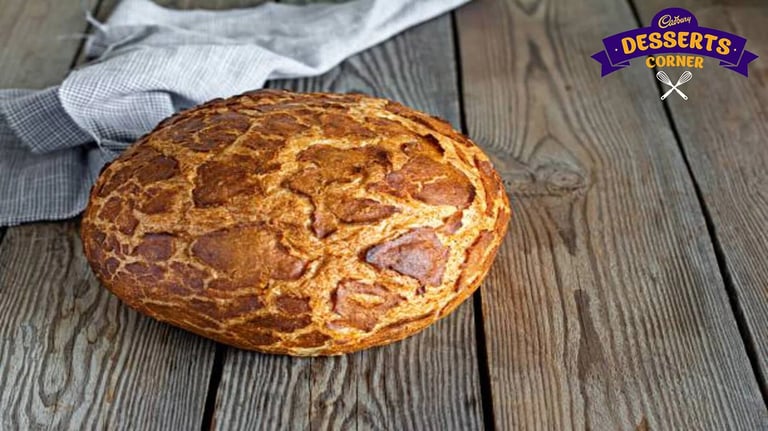A tiger bread is a unique bread thanks to its distinct texture, flavor, and appearance. Let's learn more about this famous bread.

Tiger bread is a great addition to your dinner table if you want to level up your meals. It is a wonderful bread that would instantly elevate any dish thanks to its wonderful texture and appearance. It is something that is bound to catch the attention of everyone at the table. It is a creation from the Netherlands and it is called tijgerbrood or tijgerbol from the 1970s.
It goes along with various dishes such as stews, soups, gravies, and more. The best part? It is quite easy to make and has a straightforward process. So, let's get into the world of tiger bread and learn how this famous bread gets its distinct appearance and flavor that everyone loves.
What Is Tiger Bread?

Tiger bread is a popular bread that originated in the Netherlands. It is also known as Dutch crunch, tijgerbrood, and tijgerbol, famously. Tiger bread is a lovely baked good that is a favorite among many people and is known for its distinct crackled crust that is similar to the stripes on the body of a tiger, thus the name.
History Of Tiger Bread

While the first tiger bread loaves appear to have been prepared in the Netherlands, it is unclear whether the recipe originated in Indonesia. Historians attribute the introduction of rice to the Netherlands to the Dutch colonization of Indonesia in the 1600s.
The Dutch invaders established colonies throughout Asia, including India, Malaysia, Japan, and Indonesia. During this period of colonization, Dutch bakers must have noticed the adaptability of rice and began using this hitherto unknown ingredient in classic European recipes.
Another explanation explains how the practice of spreading rice paste on top of bread loaves evolved. While both wheat and rice are grown in Asia, they thrive in quite different conditions. Northern China, where the air is thinner and humidity is low, is good for wheat cultivation, whereas hot, wet, and humid South China is ideal for rice cultivation.
According to some historians, tiger bread originated in Asia when wheat was scarce and rice was a readily available replacement. The practice of spreading rice paste on wheat bread dates back millennia in Asia. Examples include Melon Pan, a wheat-based Japanese bread with a starchy crust, and the Bo Luo Bao (also known as the Chinese pineapple bun), which has a similar, sweet-tasting crust.
To explain the bread's Dutch name, some historians assume it was sold in the Netherlands in the early 1900s. However, records refute this notion because rice was not easily available to the average Dutch baker in the early half of the twentieth century.
Tiger bread arrived in the United States following World War II, when many colonial Dutch and Indonesian citizens fled to the country, particularly to San Francisco. They brought the recipes with them, and tiger bread made its way to the United States.
How Does Tiger Bread Get Its Distinct Appearance?

It gets its name from the unique appearance of the loaf's top, which is obtained by coating the loaf with rice flour or sesame paste before baking. Because these pastes lack gluten, as the tiger bread bakes and expands, the paste is unable to stretch and breaks. Because of the cracking, the top of the loaf looks to have tiger patterns.
This bread is famous among some individuals due to its peculiar flavor, which is generated by the use of sesame oil and rice flour. The sesame oil imparts a nutty flavor to the tiger bread, and the crunchy topping provides a pleasant tactile contrast to the soft center. Tiger bread is typically baked as white bread since many people believe that the sesame oil and rice flour flavors would clash with stronger-flavored loaves.
Exact tiger bread recipes are generally difficult to come by. Because bread is frequently produced by commercial bakeries, any existing recipes are typically in large, industrial baking measurements. The finished result may suffer if the recipe is reduced to a tolerable household size. Some people have attempted to bake conventional white bread with sesame oil instead of vegetable oil and a coating of rice flour or sesame paste on top.
Tiger Bread Today
As tiger bread's popularity grew, several bakeries began producing various tiger bread goods, such as tiger tails and tiger paws. These loaves are not the same size or form as the original. Regardless of these distinctions, the loaves retain the tiger markings formed by the paste cooked on top. So, give this classic bread a try. Make it at home or try it at your nearest Dutch bakery for a great experience.
More Like This
Popular Articles



Trending Web Stories
Curated Recipes


















